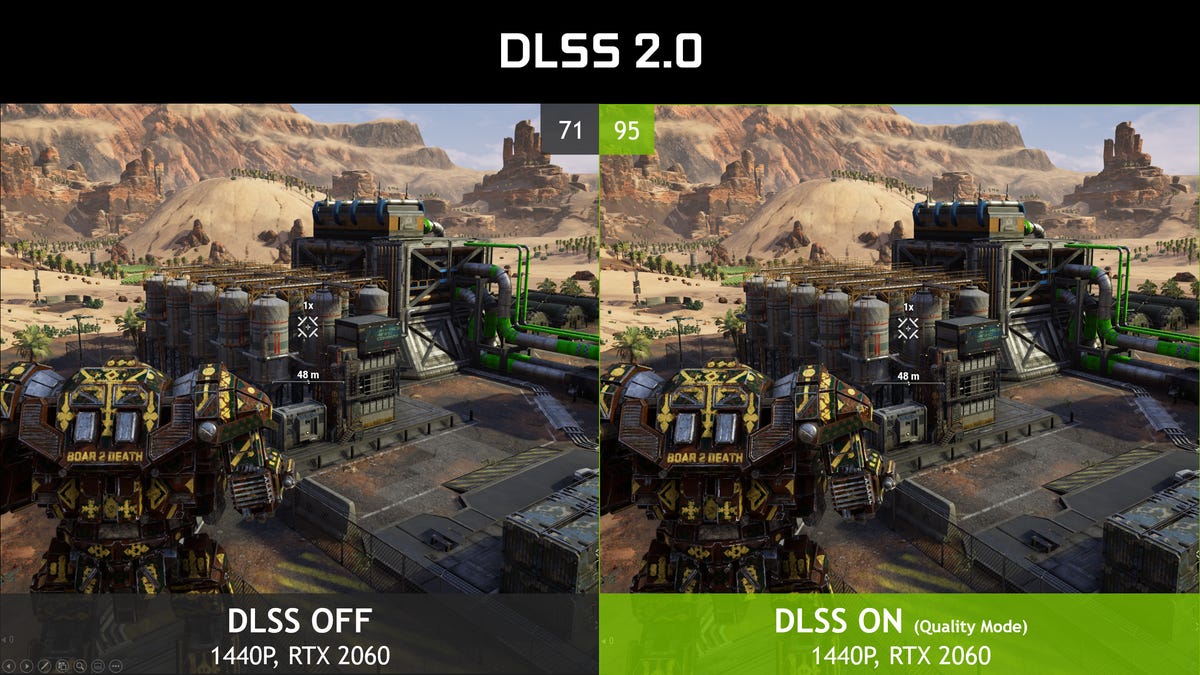Nvidia's DLSS 2 aims to upscale its low-res reputation
Better upscaling performance at 1080p and 1440p is in the cards.

Nvidia has slowly been climbing out of the reputational pit it dug with the initial release of DLSS, its AI-enhanced technology for upscaling games to run on higher-resolution displays without visual or framerate compromises. And with the second generation of the technology, it will presumably fix one of the last big disappointments: The way it works on screen resolutions lower than 4K.
DLSS, or Deep Learning Super-Sampling, uses cloud-based AI to simulate games at insanely high resolutions and teaches your GPU how to mimic that level of detail.
According to Nvidia, the upcoming DLSS 2.0 better leverages the Turing AI-acceleration cores of its RTX series of graphics processors to deliver faster performance at better quality for all resolutions. It also adds three quality options: Quality (native resolution), Balanced (one resolution-class down) and Performance (two resolution classes down) a la Control's source-resolution choices. So to output to a 4K display, for example, Quality would render at native resolution. Balanced would render at 1440p and upscale to 4K. Performance would start at 1080p and upscale.
The enhanced underlying algorithm now enables this process by feeding previous frame-render data back into the system instead of starting from scratch. That ostensibly allows it to improve detail, maintain smoother transitions from frame to frame and increase frame rates compared with rendering at the native resolution. It also makes the engine faster to train, which means we see more game developers get on board.
Earlier DLSS-supporting games don't automatically take advantage of 2.0 -- at minimum they'll require a patch. Control and MechWarrior 5 are among the first to roll out 2.0 support. You'll need to update your graphics driver as well, of course, to at least 472.75.
This is admittedly some pretty specialized news. If you need a refresher on GPUs and why they're important, see our guide to the best graphics cards for gamers and creatives.

